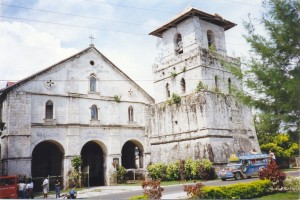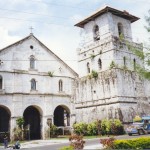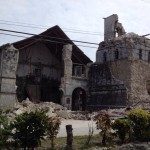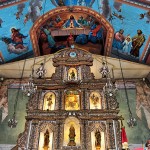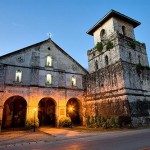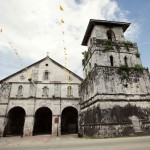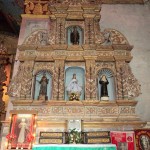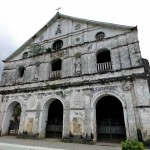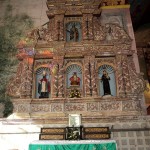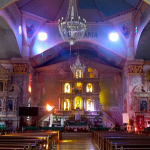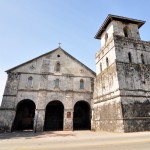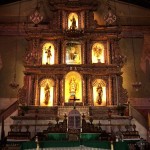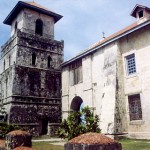Written by Soudip
December 21st 2015Other Places
You Are Here
Home > Philippines > Baclayon Church Historical Facts and PicturesBaclayon Church Historical Facts and Pictures
The Roman Catholic Church of Baclayon, located near the city of Tagbilaran, is one of the oldest churches in the Philippines founded by the Jesuits in 1596. In 1717, it was converted into a parish church while the construction of the existing coral stone church took another 10 years to complete. In 1768, the Jesuits were followed by the Augustinian Recollects who intensively renovated the Baclayon Church.
Previously, the Baclayon Church as well as the Loboc, Guiuan, and Maragondon churches were included in the Tentative List of UNESCO World Heritage under the “Jesuit Churches of the Philippines” group. The Church building was severely affected when a 7.2 earthquake hit Bohol in 2013.
History
The evangelization of Baclayon was started by the Jesuit priests who spread Christianity in Bohol. The first Jesuits to arrive in Baclayon were Fr. Gabriel Sanchez and Fr. Juan de Torres, who founded the Baclayon Church in 1596. The church underwent major renovation works under the supervision of the Augustinian Recollects including Pedro de la Encarnacion, Antonio Ubeda, and Jose Maria Cabanas. It suffered damages during the World War II but was eventually restored to its original state.
Description
The church, constructed of coral stones, has a cruciform architectural plan with the junctures being crowned by a pyramid-shaped wall. Its position is strategically important as it faces the sea. The defensive stone walls that surrounded the original church complex were removed during the 1870s. Moreover, galvanized iron replaced the tiled roofs in 1893.
Façade
The façade, situated behind the portico, was constructed in 1727 by the Jesuits. It features a choir loft that has a 19th-century pipe organ. The portico, added in 1875, is connected with the façade by a trail of blue tiles.
Interiors
The entrance to the church is surrounded by an arcade that leads to the narthex. A new wooden floor was built in 1852, as the floor on the inside was lower than the surface outside. The wooden floor was replaced by a tiled floor during 1874-1875. Inside the church, several reddish paintings dating to 1856-1859 can be seen on the wooden panels. The church on its right side has an 1870-pulpit made in Baroque and Neoclassical style.
Altars
The Baclayon Church features three altars or retablos.
- Retablo mayor: The centre of the altar has the anagram of Virgin Mary. Its uppermost level has a representation of St. Joseph; the middle level has images of St. Gabriel, St. Michael, and Holy Trinity; the lowest level has depictions of Saint Joachim and Saint Anne.
- Gospel retablo: The Gospel retablo, situated on the left-hand side, has been dedicated to Santo Nino.
- Epistle retablo: The retablo on the right-hand side has a nineteenth-century depiction of Our Lady of Consolation at the centre.
- Baclayon Church
- Baclayon Church After Earthquake
- Baclayon Church Altar
- Baclayon Church at Night
- Baclayon Church Before Earthquake
- Baclayon Church Epistle Retablo
- Baclayon Church Facade
- Baclayon Church Gospel Retablo
- Baclayon Church Inside
- Baclayon Church Pictures
- Baclayon Church Retablo Mayor
- Baclayon Church Watchtower
Watchtower
The watchtower or the bell tower, though left incomplete by the Jesuits, was completed by the Augustinian Recollects. Constructed of coral stones, the tower was originally detached from the church but was connected following the inclusion of the portico.
Convento
A branch of the left transept was used by the Jesuits as the living quarters. It was further extended in 1872 under Father Cabanas and was transformed into a proper convento (clergy house). It is a true stone house since its first floor is constructed of coral stones combined with egg white and plaster while its second floor is made of bamboo.
Category
PhilippinesWritten by Soudip
December 21st 2015
